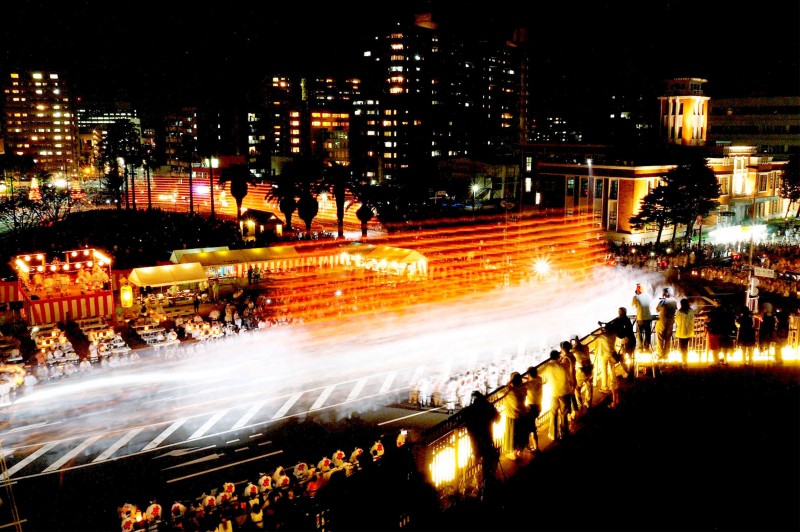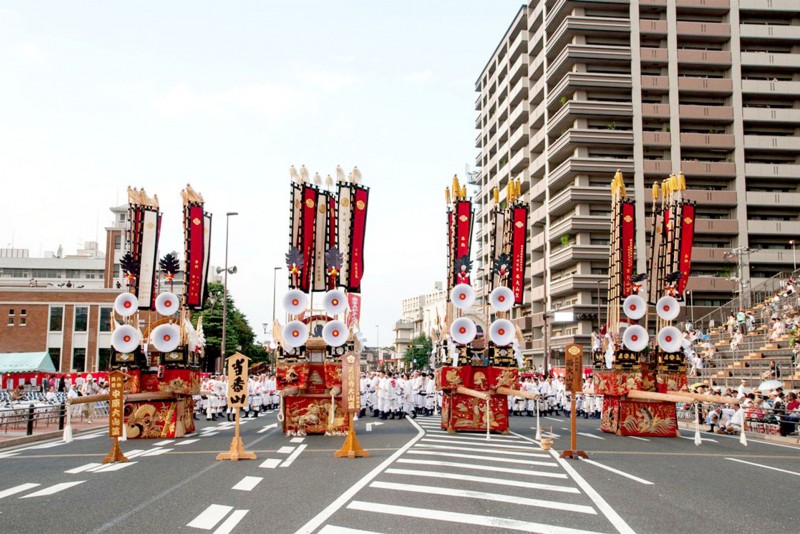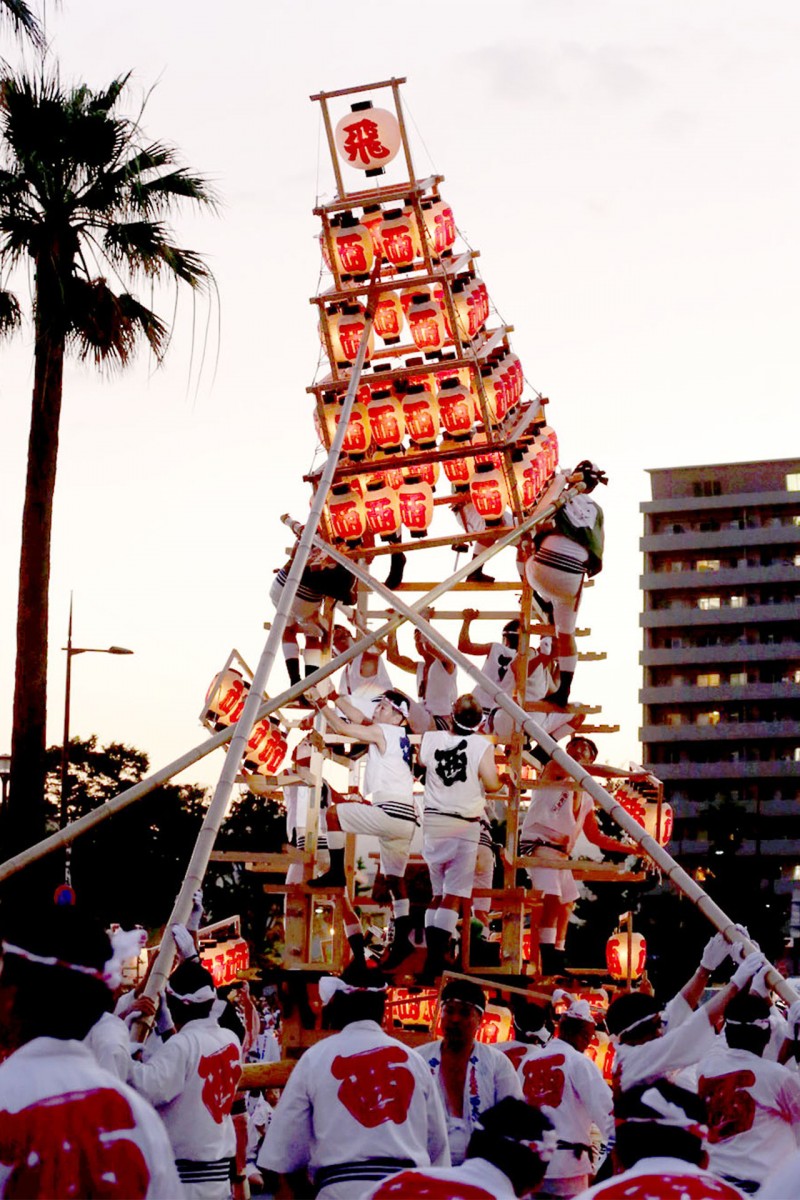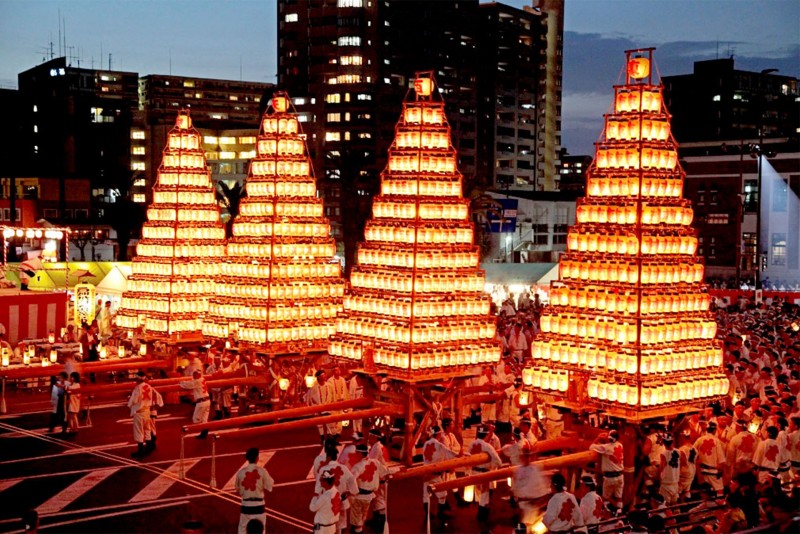【UNESCO Intangible Cultural Heritage】This regional tradition has over 200 years of history. Dedicated to the Gion Matsuri, the four large floats, known as "Yamagasa", including two from the Tobihata Hachimangu Shrine (Higashi, Nishi), one from the Sugawara Shrine (Tenraiji) and one from the Nakabaru Hachimangu Shrine (Nakabaru). Listed as one of the nation's important intangible folk cultural assets, it is loved by locals as "Chochinyama" and is one of the three major summer festivals of Fukuoka Prefecture.
Roots date back to the Edo period when the capital was attacked with an epidemic and the people prayed to Suga-o-mikami (another name for Susano-o, one of the two major gods involved in the creation of Japan) for help. After successfully ridding the land of the disease, the people in turn created a yamagasa to celebrate and show their gratitude.
During the day the float is decorated with flags in what's called "nobori yamagasa", and at night it trades the flags in for lanterns in what's called "chochin yamagasa". It is rare, in any part of the country, to see a festival morph so drastically. Also, when it is in lantern form, it is one of the nation's biggest floats of its kind.
Roughly eighty pullers are needed to maneuver the float, and they do so to the rhythm of gongs and drums played by the hayashi, the accompanying traditional band during festivals. They parade forward while calling "Yoitosa, Yoitosa!". It is really a sight to see.
Held every July in neighborhoods all throughout the Tobata region, over 200,000 people come from all over the country to join in on the celebration.


The most exciting part of the festival is during the Tobata Gion Oyamagasa Competition held in front of the Tobata Kuyakusho in the late afternoon. Four giant floats, meet up with four "young" floats carried by middle school students from various neighborhoods, which is a worthy sight to see on its own. The climax involves a free for all team pursuit of lantern floats where you can really get a taste of the lavish and powerful yamagasa in progression.

You must see the Godan-age, the moment when the 8 floats gather and morph from "nobori yamagasa"into "chochin yamagasa". Every single decoration is taken off and replaced with 309 lanterns, on twelve steps, reaching 10m in height and weighing 2.5t, to become a giant glowing pyramid. And this all happens within 3 minutes after the signal is given. The moment it is complete, the audience erupts in applause.
Pay attention to the polished teamwork that makes this precise and speedy change possible.

The lantern float that parades at night after the Godan-age, is called "Chochinyama" the nickname of this festival.
The soft glow of a single lantern becomes overwhelming when alongside 299 others, possessing the impression of a single massive flame. Witness the dynamic chochin yamagasa, and get a good taste of the fantastic and original atmosphere of the festival.
Please do not use drones.
Please do not save places to sit using sheets or chairs.
Please follow the directions given by staff when crossing streets.
For your safety, please do not approach the float while it is on route, changing or being disassembled.
Access to Tobata
[Nearest Station]
JR Tobata Station, Kagoshima Honsen Line
Venue
Oyamagasa Competition
Address: 1-1 Senbo, Tobata Ward, Kitakyushu City, Fukuoka Prefecture (Tobata Kuyakusho Mae)
10m walk from Tobata Station